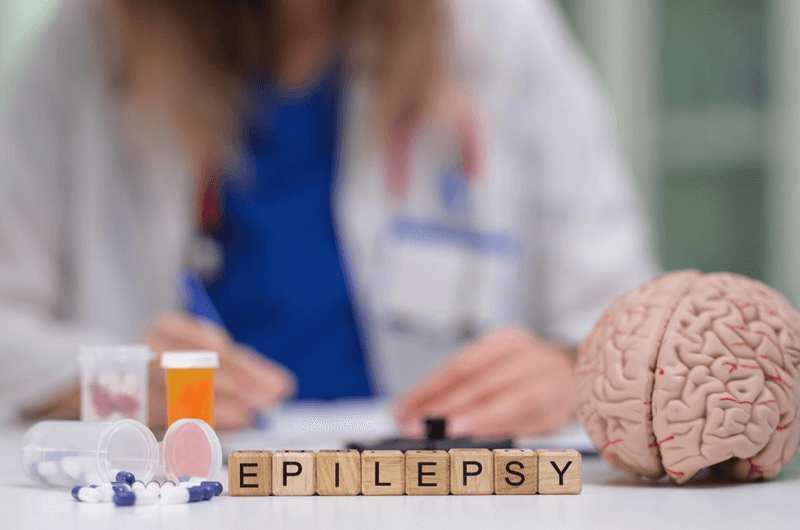Epilepsy is a serious neurological disorder in which the central nerve cells in the brain work abnormally causing seizures. According to the World Health Organization (WHO), more than 65 million people suffer from this disease worldwide. Reports suggest that more than two million people in the United States have epilepsy. It is estimated that 1 out of 26 people will develop this condition at some time in their life. The average incidence of epilepsy in the United States each year is estimated at 150,000, with the rate of this disease being higher in young children and older adults.
Medical Coding for Seizure Disorder and Epilepsy
Epilepsy and seizure disorder are central nervous system disorders and are characterized by sudden onset of seizures and muscle contractions. The seizure disorders and recurrent seizures are coded to epilepsy. Convulsions, new-onset, and single, febrile/hysterical seizures are coded as non-epileptic.
ICD-9-CM code 345 signifies “Epilepsy and recurrent seizures”. Under this head, the medical codes 345.0 to 345.9 and their subsections describe different forms of epilepsy such as non-convulsive, convulsive etc. In the ICD-10 coding system, code G40 and its comprehensive subsections allow clearer representation of different types of epilepsy. Neurologists and their office staff should have in-depth understanding about the new guidelines or practices for medical billing and coding. Accurate diagnostic and procedural codes are to be reported on the claims to receive on-time and correct reimbursement.
For early and accurate diagnosis of the disease symptoms, neurologists recommend routine screening tests. Routine screening tests help patients manage the disease symptoms in a better manner thereby enhancing their quality of life. As part of the diagnosis, the neurologist will evaluate the patient’s medical history, analyze symptoms and perform a complete neurological exam. They may also recommend several tests such as blood tests, electroencephalogram (EEG), computed tomography (CT) or magnetic resonance imaging (MRI) to monitor the brain activity and determine the correct treatment modality required.
For more than 70% of people diagnosed with this disease, seizures can be controlled with medications which may depend on the specific type of seizures. On the other hand, if medications don’t treat the condition, doctors may propose surgery, electrical stimulation therapy, special diet or other suitable treatment.
Reporting EEG Monitoring
EEG monitoring is considered medically necessary in cases where a diagnosis cannot be made by neurological examination, standard EEG studies and ambulatory EEG monitoring, and the non-neurological causes of symptoms such as cardiac arrhythmias and syncope have been ruled out:
- To differentiate epileptic events from psychogenic seizures Or
- To establish the first diagnosis of a seizure disorder Or
- To establish the specific type of epilepsy in poorly characterized seizure types in cases where such characterization is medically necessary to select the most appropriate therapeutic regimen
CPT code 95951 is used to report monitoring localization of cerebral seizure by radio or cable. It is combined EEG (electroencephalographic) that differentiates different types of epileptic events. Typically, the physician monitors the patient for 15 to 30 hours, not more than that. The EEG and video are intended to change an uncertain diagnosis for seizure surgery.
If the services are less than nine hours, an alternate code usually 95813 will be needed. This is an EEG extended monitoring code, which is more than one hour. For services lasting from 9 – 15 hours, code 95951 is to be reported with the modifier -52. This is a reduced services code, signifying that the physician reduced the services described by the CPT. Code 95951 is billed once each 24-hour period. Most payers allow full payment for CPT code 95951.
Importance of Early Diagnosis of Epilepsy
Having a single seizure (due to a high fever) does not necessarily indicate that the person is suffering from epilepsy. On the other hand, if a person suffers two or more seizures, then it is confirmed that he/she is suffering from this chronic neurological disorder. Early diagnosis and recognition of seizures is important to prevent further problems. Undiagnosed seizures can lead to learning disabilities, behavioral problems, sudden loss of awareness or consciousness, psychic symptoms, temporary confusion and other issues. Now, for some recent news.
Low Carbohydrate, High Fat Diets May Reduce Seizures
A new research review published in the medical journal of the “American Academy of Neurology” (October 29, 2014 issue) reports that diets rich in fat and low in carbohydrates (such as the ketogenic or modified Atkins diet), may reduce seizures in adults with tough-to-treat epilepsy. The ketogenic or modified Atkins diet may include food items such as eggs, heavy cream, fish, butter, green leafy vegetables and bacon.
As part of the study, researchers reviewed 5 studies each on the ketogenic diet and Atkins diet including a total of 47 people in the first analysis and 85 people in the second analysis. The major findings of the study include –
- About 32% of people treated with the ketogenic diet and 29% of those treated with Atkins diet experienced more than 50% reduction in their seizures.
- It was found that 9% of people in the ketogenic group and 5% of people in the modified Atkins group suffered more than 90% reduction in seizures.
- People experienced long term positive results within days to weeks after following both the diets. However, the results did not continue in children after they stopped following the diet chart correctly.
- Both the diets did not involve much serious side effects with the most common being weight loss.
The study results signify that following these diets correctly can prove to be very effective as another option to reduce seizures in people having severe or tough-to-treat epilepsy. However, 51% of the ketogenic diet group and 42% of Atkins diet group stopped the diet before the study was fully completed due to culinary and social restrictions.




